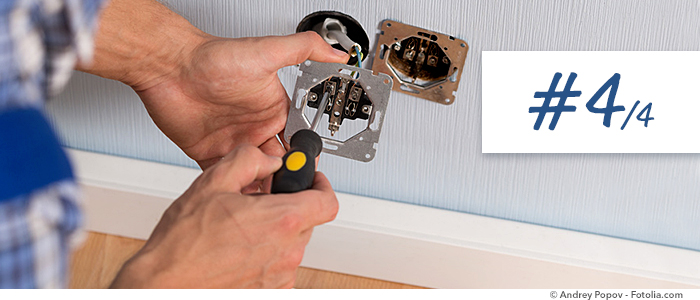When a new building is constructed, you can install any number of plug sockets – later there is guaranteed to be one missing exactly where you need it. Even though work with electricity can be dangerous, you do not necessarily need to call an electrician straight away to install and connect additional plug sockets. In the last part of our renovation series, we’ll show you how easy it is…
As a handyman, you can also work on electronics yourself, as long as you pay attention to a few important rules. The most important thing: safety comes first! This is because touching just one wire in an electrical installation can be enough to give you a life-threatening electric shock. For this reason, the electrical circuit you are working on must first be disconnected from the power supply, and secondly, tested with a reliable measuring device.
For this there are of course the corresponding Trotec devices: firstly the two-pole Voltage Tester BE20, the perfect measuring device for ambitious handymen and electricians. Secondly, there is the Digital Multimeter BE50 – with a total of eleven measurement functions, this measuring device is suited to the most diverse applications in the commercial or semi-professional field.
Please also bear in mind: installation work on fuses should only ever be carried out by licensed electricians.
Fitting the plug socket – this is how it works:
Please note before starting: depending on the region, you may only be allowed to install additional plug sockets after fitting fuse protection in the form of a residual current circuit breaker (FI). If in doubt, ask your local electrician!


